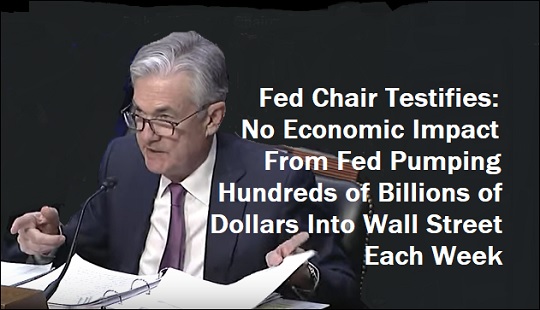Courtesy of Pam Martens
Fed Chairman Jerome Powell Testifies Before the Joint Economic Committee of Congress, November 13, 2019
By Pam Martens and Russ Martens
The S&P 500 Index and the Dow Jones Industrial Average set new record highs every single day last week. This occurred despite the Federal Reserve justifying its unprecedented hundreds of billions of dollars each week in cheap loans to Wall Street’s trading houses as necessary to stem a “liquidity” crisis.
You can’t have a liquidity crisis when the stock market is setting record highs for an entire week. Those two things just don’t correlate.
The Fed, through its money spigot, the New York Fed, began sluicing these funds to Wall Street on September 17, the day the overnight borrowing rate in the repurchase agreement (repo) loan market spiked from 2 percent to 10 percent. This was the first such intervention by the Fed since the financial crisis. The repo market is where banks, hedge funds and money market funds loan each other money overnight on the basis of good collateral like U.S. Treasury securities.
An unprecedented spike to 10 percent in the repo market is a harbinger that one or more of the borrowers in this market is in trouble and lenders don’t want the exposure so they are backing away from lending. This is how free markets are supposed to work. They are supposed to be allowed to send pivotal warning signs from time to time through an efficient pricing mechanism.
…




